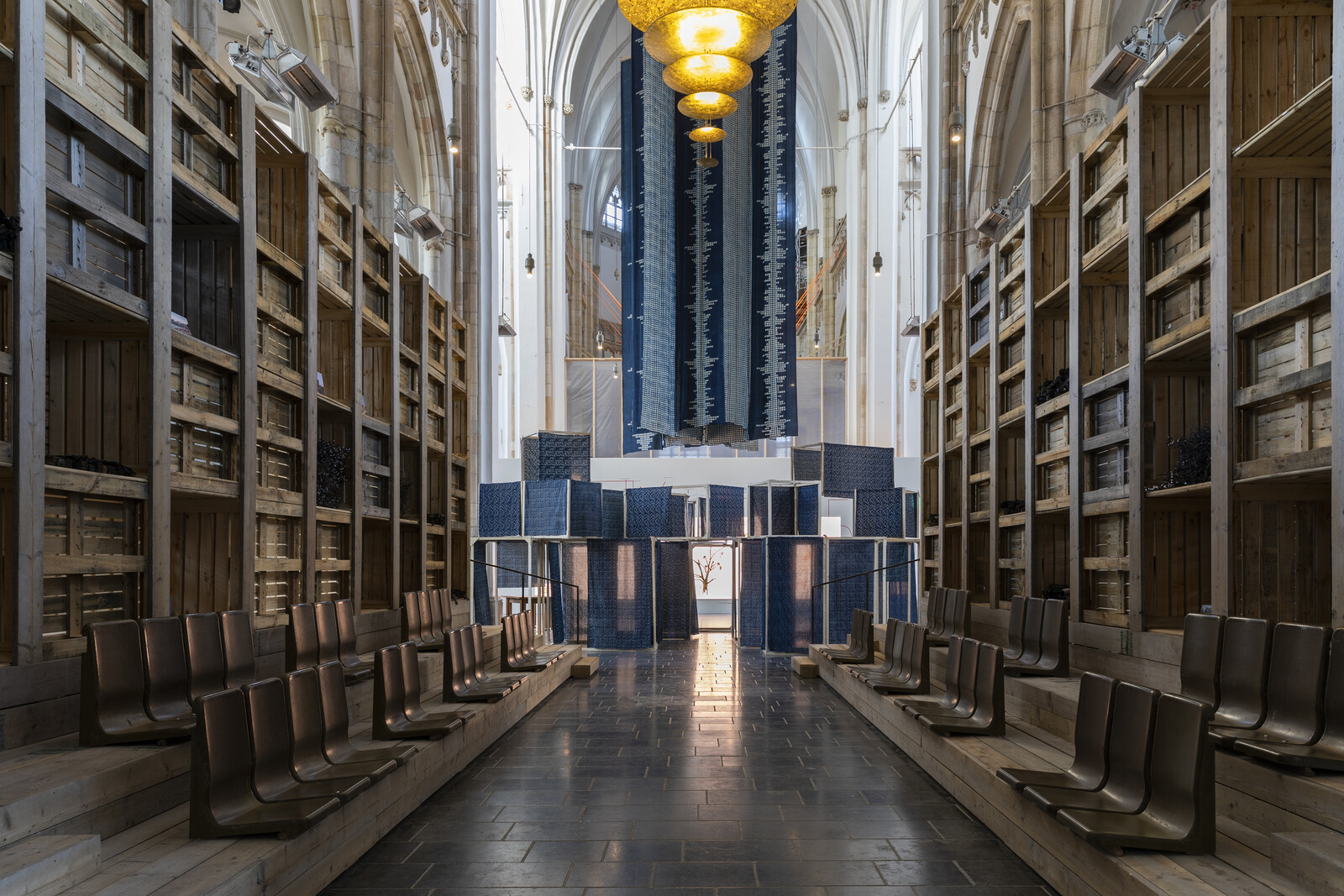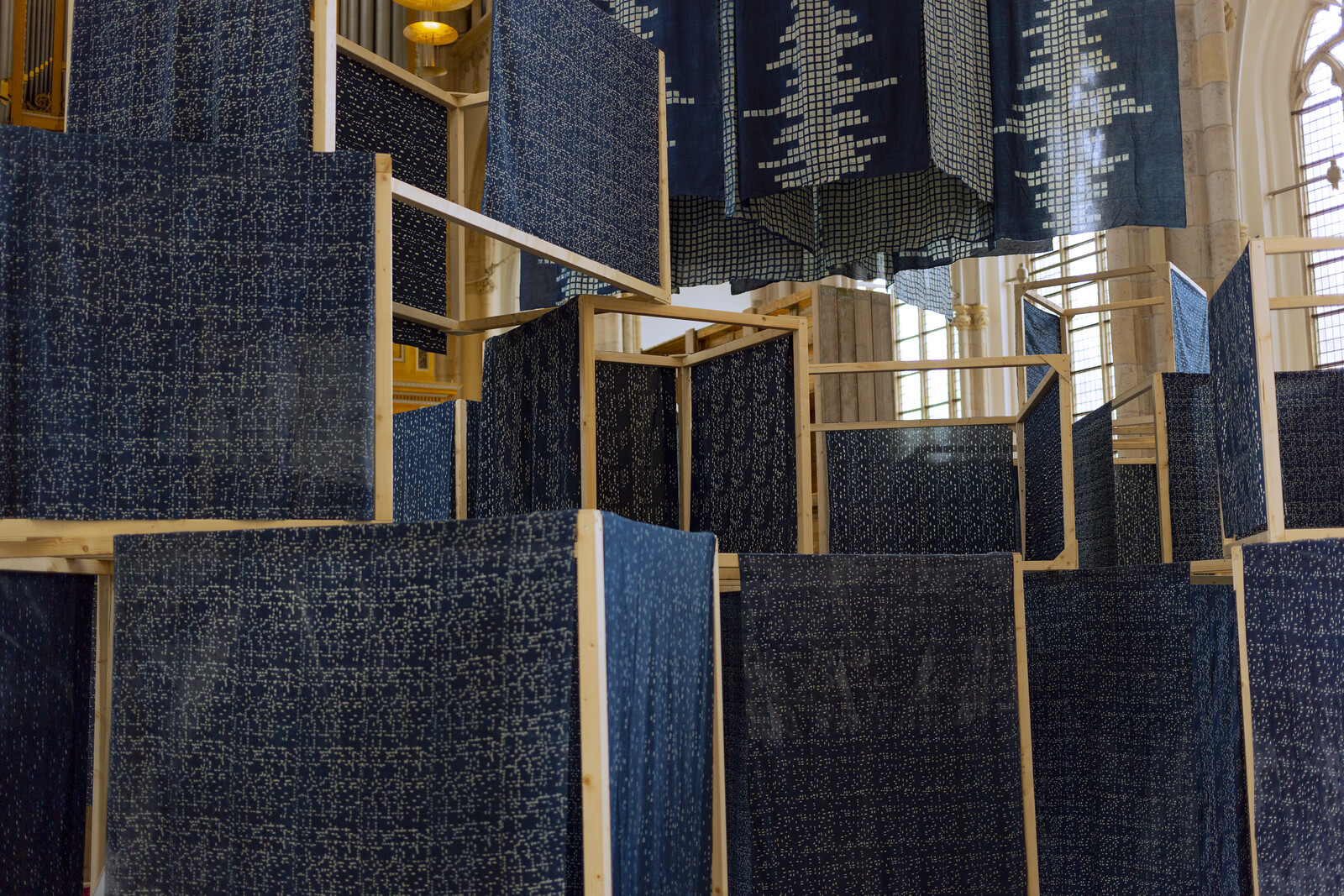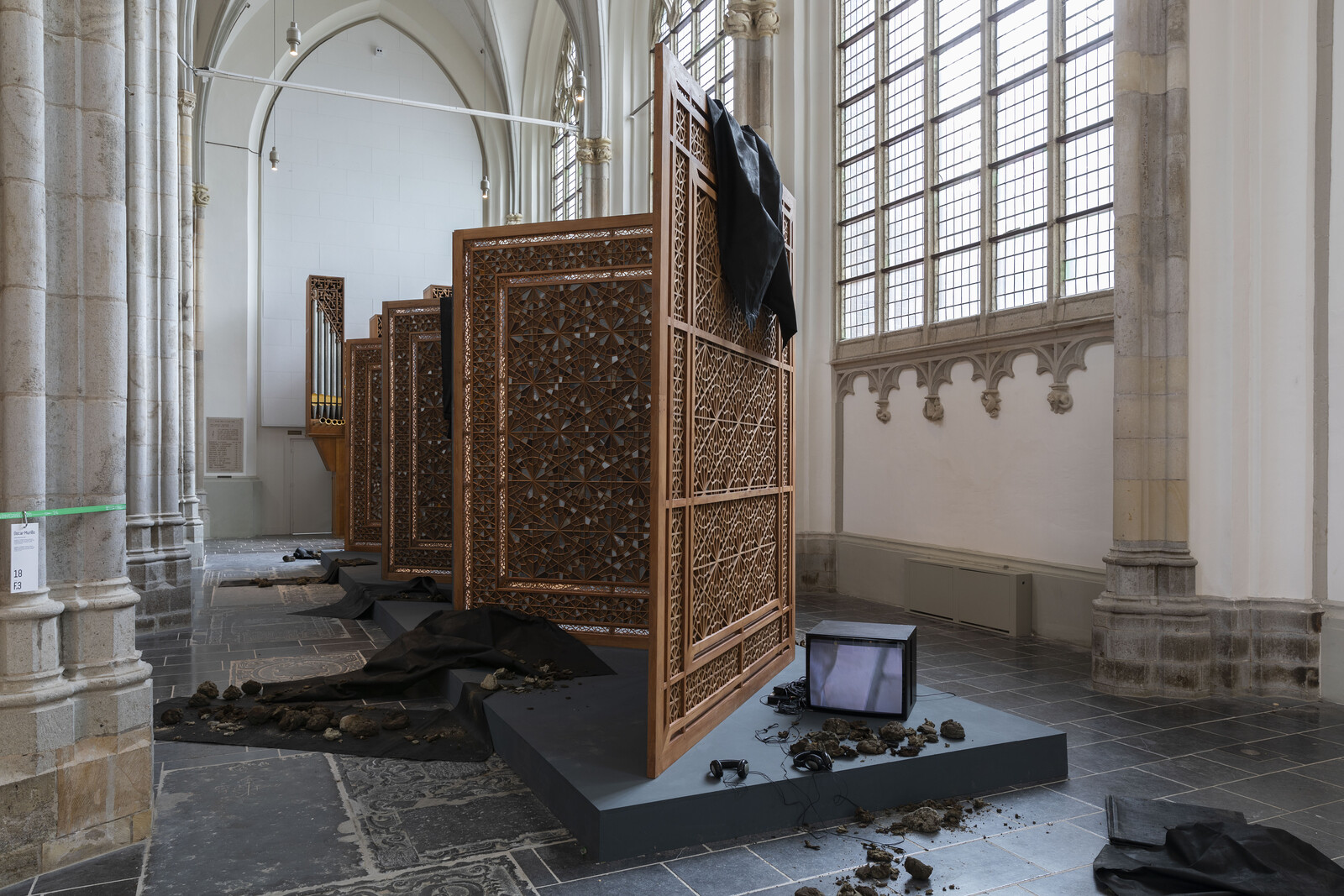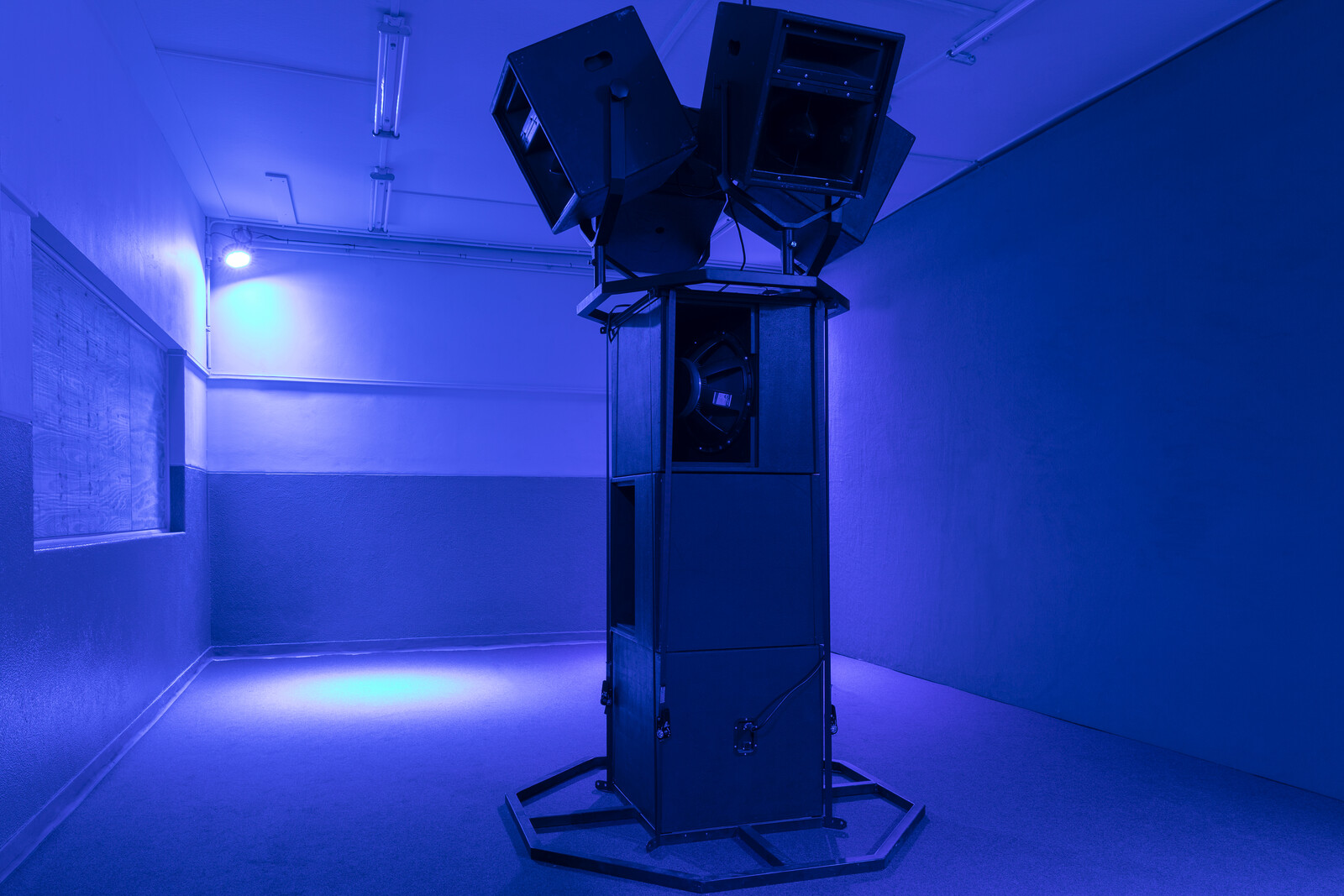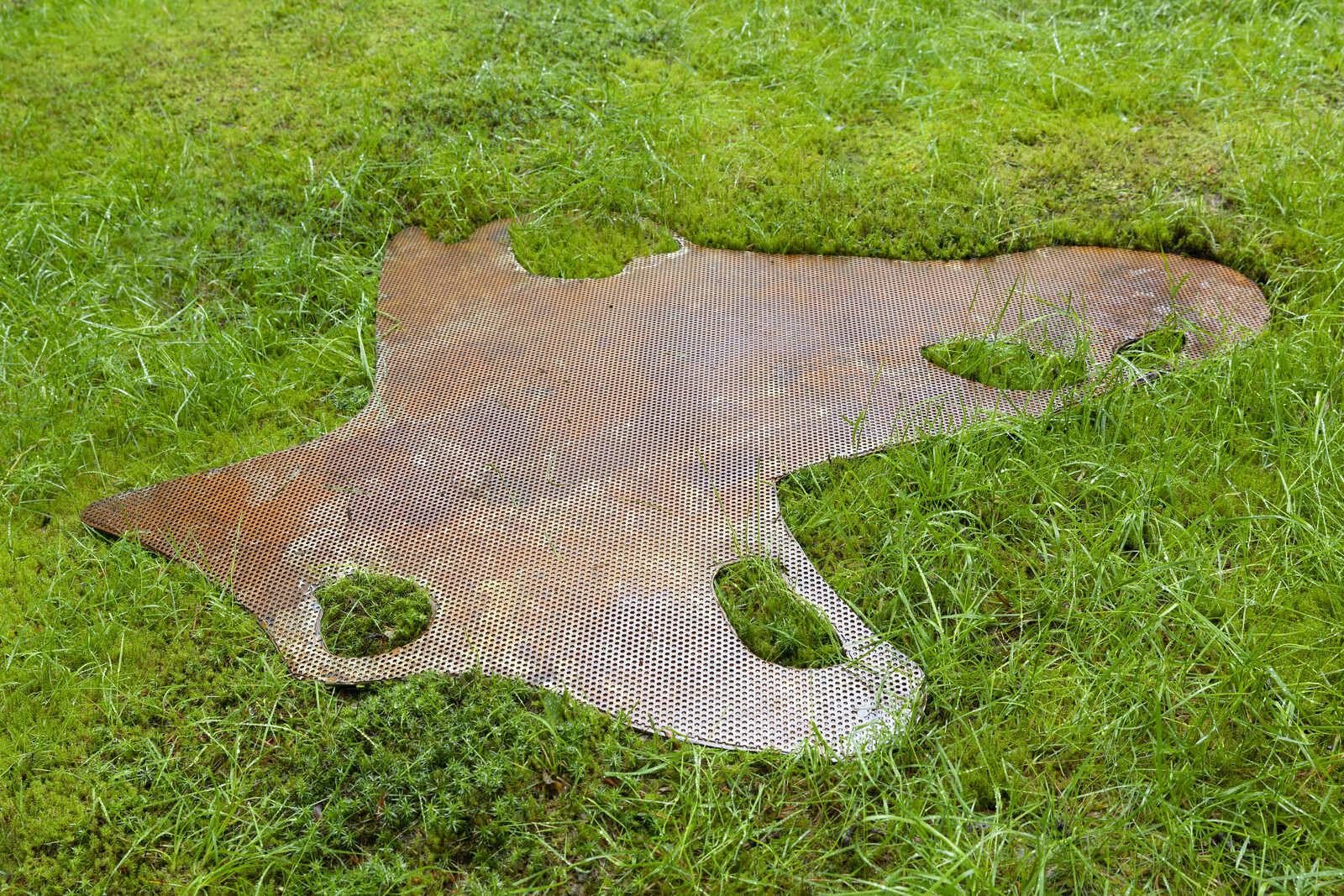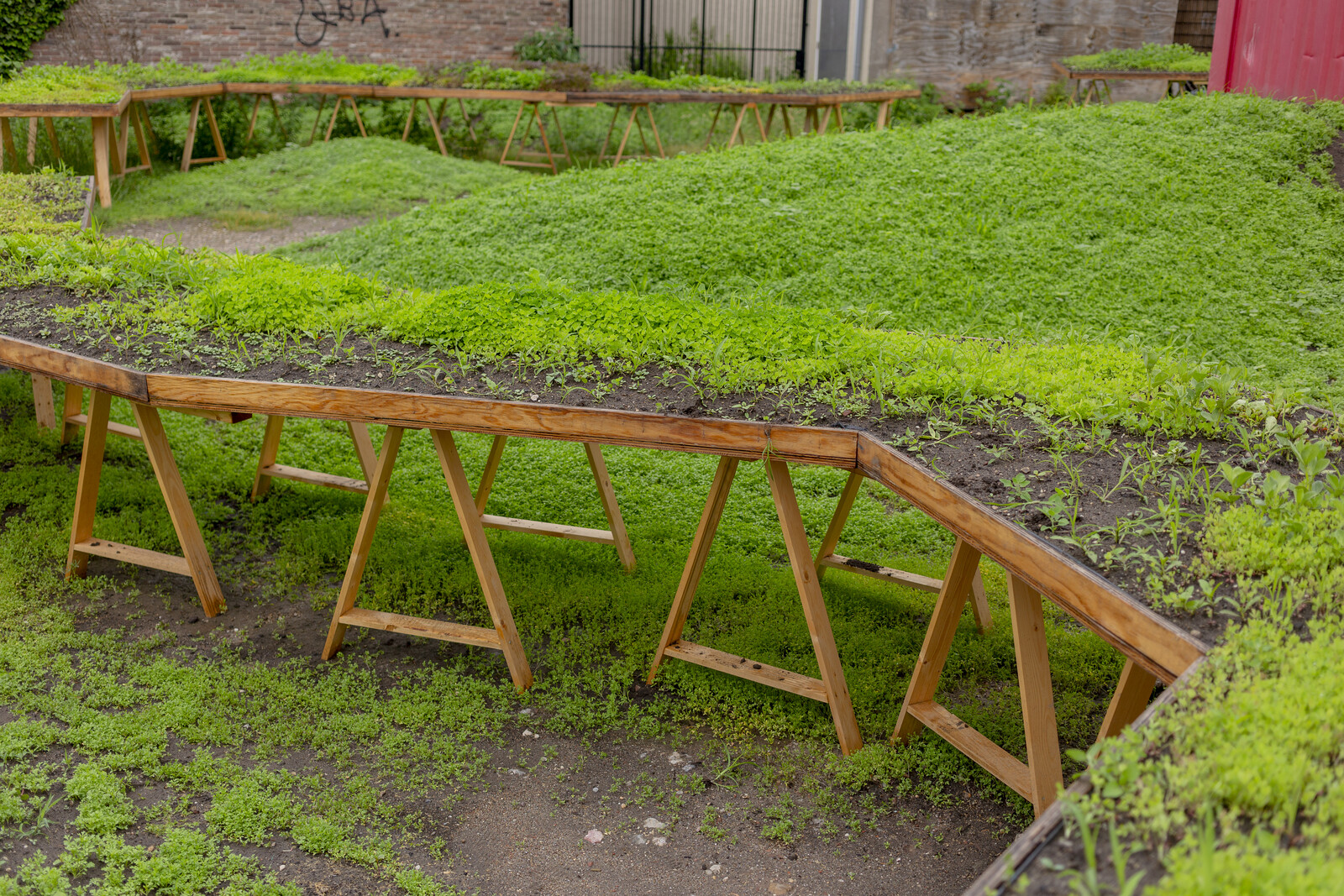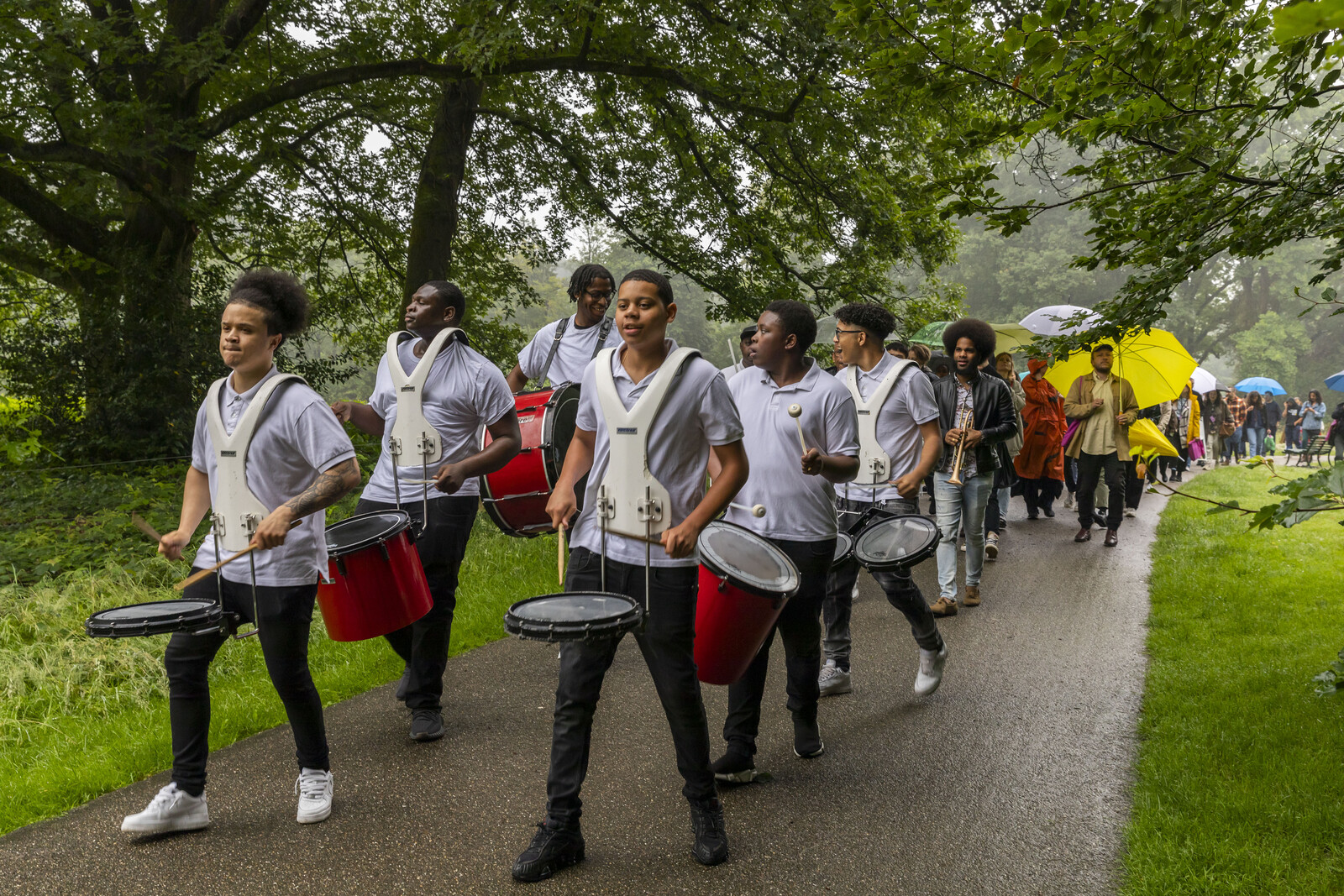July 9–August 29, 2021
Early on in the preview for sonsbeek20→24, I started thinking about art historian James Elkins’s Pictures and Tears: A History of People Who Have Cried in Front of Paintings (2001). Among the book’s touching elements is a seriously brooding table of contents: “Crying at the Empty Sea of Faith,” “Crying at nothing but colors,” and so on. At the risk of over-performing my own sentimentality, the press conference, of all things, set the exhibition up for me in a similar way.1 Instead of procedural speeches, there were testimonies on overwork and the uneven distribution of rest from co-curators Amal Alhaag and Aude Christel Mgba (Antonia Alampi and Zippora Elders complete the team with support from Krista Jantowski), artistic director Bonaventure Soh Bejeng Ndikung’s remarks about assembling through and despite resonant bitter histories, and several other expressions of weariness, resilience, anger, and pride. These statements were interspersed with live choral music performed by Black Dutch gospel group G-Roots, whose songs felt programmed to raise energy and spike emotion. The form and feeling of this event set an affective index for the exhibition’s opening days.
The press conference took place in St. Eusebius Church, a sixteenth-century landmark in Arnhem that doubles as an exhibition and performance space, including a weekly “Sunday Service” of discursive events. Amid the capacious structure is an iteration of Ibrahim Mahama’s 2019 piece Parliament of Ghosts, which re-employs seats, objects, ephemera, and structural materials from Ghana’s colonial-era Gold Coast Railway into a vernacular amphitheater. The piece is flanked by two other works: on one side, long, hanging indigo block-prints set a stage for the sound work Electric Dub Station (Orbital Ignition) by Antonio Jose Guzman (in collaboration with Iva Jankovic, 2018–ongoing); on the other, Oscar Murillo’s Human Resources (2021) features large windows made of repurposed wood and stained glass in the traditional Azerbaijani “Shabaka” style. Taken as a whole, the construction feels like a church within a church whose sacred elements mix colonial objects, memories, and non-western traditional craft that syncretically combine with the atmosphere of St. Eusebius.
While these works compose their own collective association in the space, they are each part of the exhibition’s different conceptual strands, or “Frequencies.” These invite a parallel or non-linear accumulation of understanding for how the works throughout the exhibition—which extends from Sonsbeek Park through city galleries, outdoor spaces, shops, and off-site locations, including ones outside Arnhem—connect to concepts of labor and sonicity. Mahama’s work, for example, is part of Frequency One, titled “Those the Night Surprised in Their Noons: Of Rituals and Precarities.” This strand brings together portrayals of work, such as ship-breaking in Hira Nabi’s video All That Perishes at the Edge of Land (2019), domestic work in the painting series “Celles qui nettoient le monde … Those who clean up the world” by Alida Ymele (2019–20), or field recordings of exploitative labor and the social routines that surround it in Louis Henderson and João Polido’s five-channel sound installation Composition (2019). Other “Frequencies” deal with labor and sound as they entangle with familiar contemporary themes such as the more-than-human (including notably Leo Asemota’s First permutation: how-hard-and-how-far-and-how-long, a series of sculptures from 2021 embedded in the ground that refer to ant colony configurations) and the archive (Anne Duk Hee Jordan’s 2021 installation The Living Plant Archive, which explores ecosystems created by the spice trade, is a highlight). Their titles—“Yet Fear Shall Fail to Conquer our Warmth,” “Places Between Us Deeper Than the Ocean”—are as evocative and sincere as Elkins’s Pictures and Tears chapter headings.
A lot of these thematic associations are likely to pass you by if you’re, say, just taking a bike tour around Sonsbeek Park or the grounds of the Kröller-Müller Museum, looking to spot works and make meaning.2 Localized descriptive text is sparse or non-existent, leaving room for individual experiential interpretation, certainly, but also playing on a line of de-contextualizing or de-textualizing many of the material, productive, emotional, and research practices embedded in the artworks. This is unfortunate: while some objects can speak for themselves on a visual level, it’s often the subtler works that have more to say.
However, the live moments and transmissions—of which there were many leading up to, and running throughout, the exhibition’s run—bring the work and social ethics of the Frequencies into clarity. Day two of the preview, for example, fell on Keti Koti, the day which each year commemorates the abolition of slavery in Suriname and the Dutch Caribbean islands. Keti Koti is typically celebrated with public festivities, but for the past two years, these have been suspended due to the pandemic. This has felt particularly lamentable amid flourishing movements at this same time—led by Netherlands-based organizations like Kick Out Zwarte Piet, The Black Archives (who are also part of the exhibition), and the Mapping Slavery project—to bring more of the country to properly reckon with its colonial history and present-day anti-Black racism. Sonsbeek’s Keti Koti events included “More That! A Noisy Ballad for Freedom,” a morning walk through Sonsbeek Park following the drumming march of Amsterdam-based Caribbean brass band Ritmo Percussion. That evening, the symposium “Sea as History: A Tribute to Keti Koti” blended academic discourse with performance and music, and featured a semi-spontaneous dance party in the middle, bringing the audience onto the floor of Mahama’s Parliament. These movements made a small effort to fill in a gap where an important larger cultural event could not operate. There is something powerful in taking that up, particularly in the generous, labored way these social formations were organized. In doing so, they remind us of despicable histories, painful memories, and their bodily and communitary legacies—but meanwhile infusing their expression with willful, joyful recognition.
It’s clear that I, and many others, have changed emotionally in profound ways since the last Biennial or Festival opening. We’re finally coming out of being socially understimulated, and consequently emoting more easily. I cannot say how much this affects my feelings on or interpretation of this show, and really, who cares? Times are made of material conditions and feelings.
There is an app that might help this to some degree, but I wasn’t aware of it until leaving, and its reliance on GPS renders it only really helpful on-site.

